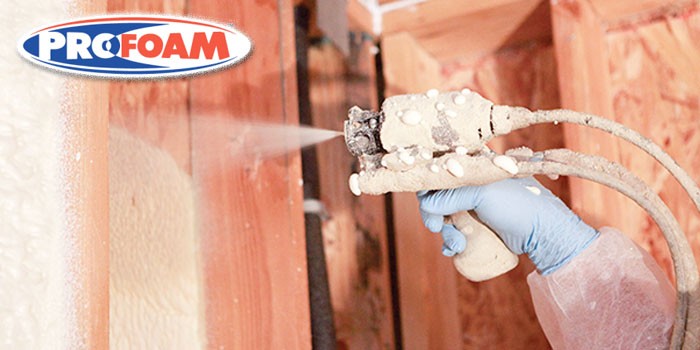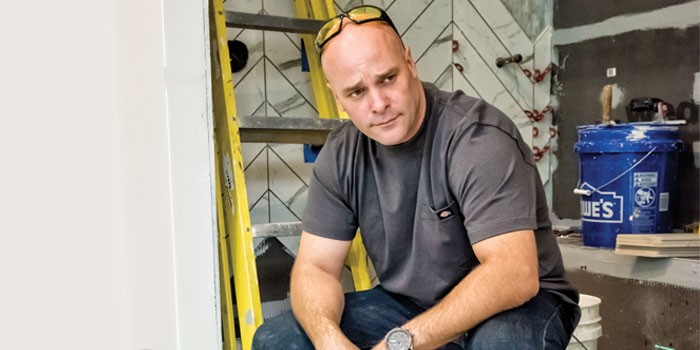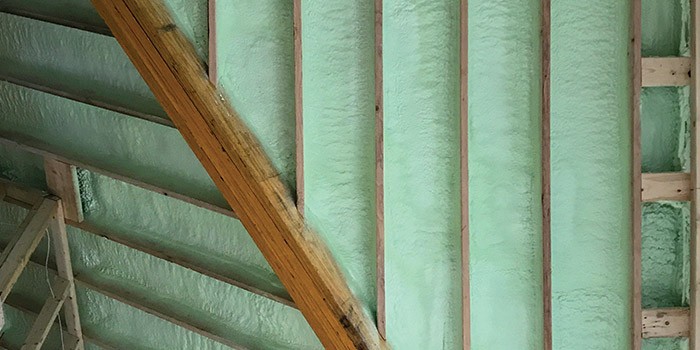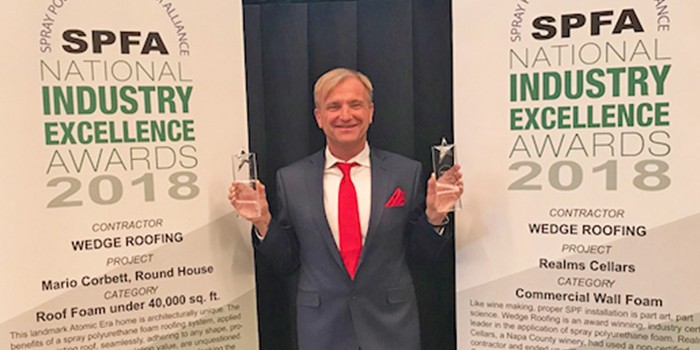Profoam Corporation Discusses New R-Value Requirements

RUTLEDGE, GA – June 9, 2017 – The Energy Codes have changed for much of the Northeastern United States. As of late 2016, R-21 is the required R-Value in residential walls. As with all code changes, increased restrictions mean environmental protections, which leave some buildings – and some contractors – falling short. If you spray foam, especially if you spray open-cell foam in New England, you need to have the facts about the code change.
If you are installing an air barrier system in new construction or are performing renovations to single-family homes or residential buildings that are three stories or less, this code change directly affects your work. As of late 2016, the walls in these structures must meet R-21. Further, these structures are only allowed three air changes per hour at a pressure differential of 50 pascals (3ACH50). As explained in an outstanding video produced by the Urban Green Council of New York (www.urbangreencouncil.org/blowerdoor), this means that in a standard 2,500-square-foot building, if all the cracks, gaps, and tiny holes in the entire structure were combined, they could only equal the size of a 150-square-inch hole. Moreover, it is important to note that certain areas of the country follow Passive House Standards, which are even more stringent. These Standards allow leakage from an area that is the size of an average cell phone. Regardless of leakage allowance, to prove tightness, now all affected structures must pass a blower door test to pass during final inspection.
R-21 And A Complete Seal?
Planning for a continuous air barrier involves multiple players: The specifier, the builder, and all involved contractors and subcontractors who must follow an integrated work plan that properly schedules coordinated air-sealing jobs. This way, if your spray foam is on a wall that has to be penetrated by the electrician for example, you can be on hand and immediately reseal it.

To help in planning, the Code lists 15 specific locations in the structure that must be air-sealed in order to pass the blower door test. These can be broken down to the essentials: Attic, windows, walls, floors, and places where floors and ceilings meet walls, including through-floor, rim joists, and floor-to-slab.
Achieving R-21 can be a slightly more difficult challenge than coordinating a busy jobsite – especially if you are spraying open-cell.
Current open-cell spray polyurethane foam typically has an R-Value range of R-3.5 to R-3.8. This means that, in theory, open-cell foam is inadequate to meet the new code requirements, leaving contractors and homeowners who want to use spray foam with the more expensive, closed-cell option.
RELATED Spray Polyurethane Foam Market to Hit $1.90 Billion Globally by 2020, Report Says , Architectural – And SPF – Landmark, Meritage Homes Debuts Affordable LiVE.NOW.™ Homes with Spray Foam Insulation for First-Time Homebuyers, Spray Polyurethane Foam Goes To Mars
Now, however; there is another option. By using a hybrid 1-lb. open-cell foam, contractors and homeowners are provided with a viable time- and money-saving choice. Slightly denser than ½-lb. open-cell foam with an R-Value of 4.8, four and a-half inches of hybrid 1-lb. foam meets the new R-21 code requirement, as well as the continual air barrier requirement.
The hybrid foam requires no scarfing or trimming, eliminating product waste and making the cleanup process quicker and more efficient. As an added benefit, this elimination of trimming and reduction of cleanup time can also reduce the application process by as much as 50 percent.
Given its hybrid nature, the cell structure of the hybrid foam system is much tighter than regular open-cell foam. In fact, the cells in hybrid foam, more closely resemble closed-cell than they do open-cell. This tighter cell structure gives the hybrid foam system a much lower water vapor absorption rate, and therefore, hybrid foam is perceived to protect against water vapor intrusion much better than a regular open-cell system.

The hybrid 1-lb. foam is also easier to spray than regular ½-lb. open-cell foam. It is denser and therefore, it is easier to manage than open-cell. The ½-lb. systems are notoriously finicky and have a reputation for shrinking away from studs and /or pulling away from the sheathing in the back. This shrinkage can create air pockets in which moisture can collect. Hybrid 1-lb. foam is stable and adheres to the substrate without pulling away.
Cost of Code Change: Hybrid vs. Conventional
Adhering to the new Code is going to cost – but not as much as not adhering to it. We all know that closed-cell foam might not be an option for some homeowners because of pricing, so what about hybrid foam?
Hybrid foam is slightly more expensive than open-cell foam, but it can still result in significant savings, especially when in-place installation costs are taken into consideration. Rather than comparing the costs of the two systems directly, the better question to ask is: “What is the in-place cost?” The in-place cost for hybrid foam is up to 50 percent less than that of traditional closed-cell systems. It is relatively the same cost as traditional open-cell foam. It is, however, the savings that are to be found with hybrid foam that make all the difference – the decreased waste, the decreased cleanup time and costs, the decreased disposal, and labor time and costs – all of which would be required costs in a conventional spray foam installation.
Further, under the new Code, there is the cost of not achieving R-21. Imagine taking the blower door test and not achieving 3ACH50. In the case of failure, you have to go back, discover the source of the failure, repair it, rehire the third-party professionals to perform the test, and then, retake the test. That would be cost-prohibitive.
CONTACT Profoam
Direct any questions about R-21 and the new Code or on Hybrid Foam to Profoam:
Phone: 855-881-9699
Website: www.profoam.com
*Spray Foam Magazine does not take editorial positions on particular issues; individual contributions to the magazine express the opinions of discrete authors unless explicitly labeled or otherwise stated. The inclusion of a particular piece in the magazine does not mean that individual staff members or editors concur with the editorial positions represented therein.•
Disqus website name not provided.










































